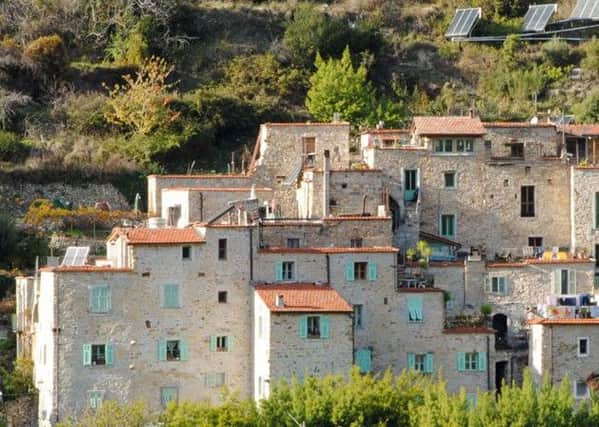Village life is worth building upon


‘While every refugee’s story is different and their anguish personal, they all share a common thread of uncommon courage: the courage not only to survive, but to persevere and rebuild their shattered lives’: Antonio Guterres, United Nations High Commissioner for Refugees, 2005
The past century has been one of unprecedented change in terms of the urban environment.
Advertisement
Hide AdAdvertisement
Hide AdGlobalisation, rapid unrestrained development, demographic changes, and economic pressures are the main factors driving change in the urban environment, which directly impacts the preservation of historic urban environments.
Immigration and population growth lead to rapid urban expansion and increased density within urban areas, while rural regions and villages have suffered from emigration resulting in population drift, stagnation and even abandonment.
These opposing conditions of growth and decline are symptomatic of larger social, economic, and cultural factors that have influenced Europe’s escalating urbanisation over the past decades.
The surge of urbanisation has resulted in so-called “ghost towns”, once thriving towns or villages that have been abandoned by their original inhabitants, either due to natural disaster or for economic, demographic, environmental or structural reasons. A large concentration of these abandoned small villages can be found in the southern regions of Italy.
In Italy there are more than 5,000 abandoned small villages. One of them is the 13th century medieval village of Torri Superiore described as a little jewel of popular architecture, situated in the foothills of the Ligurian Alps, a few kilometres from both the Mediterranean Sea and the French border, close to the coastal town of Ventimiglia.
Built completely in local stone and lime over the course of many centuries, the tiny hamlet presents a unique urban layout with a complex structure of three main buildings developed over eight levels and comprising 162 rooms linked with each other through an exceptionally intricate and labyrinthine system of stairways, alleys and terraces.
In the late 80s, a group of academics, professionals and enthusiasts began the process of negotiating the purchase of the abandoned village, and setting up a cultural association and sustainable community.
Early in the project the decision was made to renew the building in line with ecological principles and materials wherever possible while respecting the original character.
Advertisement
Hide AdAdvertisement
Hide AdAfter 25 years of renovation the ruins of the ghost settlement were given a new lease of life as an ecovillage and visitor attraction with many ecological features including the general retrofitting of the village into a cultural centre with guest facilities and apartments for residents; a combined central solar/ wood/ gas heating system that functions at low temperatures under the floor and on the walls; permaculture gardens and fruit orchards and organically farmed olive groves.
Some 140,000 illegal migrants have entered Europe via southern Italy since January.
Hardly a week passes without another perilous landing, or dangerous rescue at sea.
One of the agencies that attempt to give assistance to the migrant population is Cara Mineo, one of Italy’s largest asylum-seeker reception centres. Faced with an endless wave of distressed migrants, Cara Mineo is overstretched.
In 1998 some 200 Kurds fleeing the Turkish-Kurdish conflict landed on a beach near the small village of Riace in Calabria.
Then Riace was a ghost town. The village was in danger of becoming extinct as people disappeared to northern Italy for jobs during the economic boom.
So, the mayor took the bold decision to offer the migrants houses in the village that had been abandoned.
Today a quarter of the population is comprised of immigrants who have been given new homes and a new start in life.
Advertisement
Hide AdAdvertisement
Hide AdCould Torri Superiore and Riace’s approaches offer a potential solution to the migration crises currently engulfing southern Europe?
As a result of imaginative housing and food production practices, these villages have made significantly more progress than mainstream government approaches towards the realisation of sustainable communities by breaking the cycle of food insecurity, strengthening social cohesion, addressing climate change vulnerabilities and improving housing status.
With some imagination and integral thinking abandoned lands and villages could become home to these migrants who, in turn, could play an important role in re-populating and restoring some of southern Italy’s productive lands and neglected architectural treasures.
• May East is chief executive of Cifal Scotland www.cifalscotland.org